- Home
- Richard Dawkins
The Extended Phenotype Page 8
The Extended Phenotype Read online
Page 8
At a more general theoretical level, Lewontin (1978) notes that ‘there may often be several alternative stable equilibriums of genetic composition even when the force of natural selection remains the same. Which of these adaptive peaks in the space of genetic composition is eventually reached by a population depends entirely on chance events at the beginning of the selective process … For example, the Indian rhinoceros has one horn and the African rhinoceros has two. Horns are an adaptation for protection against predators but it is not true that one horn is specifically adaptive under Indian conditions as opposed to two horns on the African plains. Beginning with two somewhat different developmental systems, the two species responded to the same selective forces in slightly different ways.’ The point is basically a good one, although it is worth adding that Lewontin’s uncharacteristically ‘adaptationist’ blunder about the functional significance of rhinoceros horns is not trivial. If horns really were an adaptation against predators it would indeed be hard to imagine how a single horn could be more useful against Asian predators while two horns were of more help against African predators. However if, as seems much more likely, rhinoceros horns are an adaptation for intraspecific combat and intimidation, it could well be the case that a one-horned rhino would be at a disadvantage in one continent while a two-horned rhino would suffer in the other. Whenever the name of the game is intimidation (or sexual attraction as Fisher taught us long ago), mere conformity to the majority style, whatever that majority style may happen to be, can have advantages. The details of a threat display and its associated organs may be arbitrary, but woe betide any mutant individual that departs from established custom (Maynard Smith & Parker 1976).
Available genetic variation
No matter how strong a potential selection pressure may be, no evolution will result unless there is genetic variation for it to work on. ‘Thus, although I might argue that the possession of wings in addition to arms and legs might be advantageous to some vertebrates, none has ever evolved a third pair of appendages, presumably because the genetic variation has never been available’ (Lewontin 1979b)). One could reasonably dissent from this opinion. It may be that the only reason pigs have no wings is that selection has never favoured their evolution. Certainly we must be careful before we assume, on human-centred common-sense grounds, that it would obviously be handy for any animal to have a pair of wings even if it didn’t use them very often, and that therefore the absence of wings in a given lineage must be due to lack of available mutations. Female ants can sprout wings if they happen to be nurtured as queens, but if nurtured as workers they do not express their capacity to do so. More strikingly, the queens in many species use their wings only once, for their nuptial flight, and then take the drastic step of biting or breaking them off at the roots in preparation for the rest of their life underground. Evidently wings have costs as well as benefits.
One of the most impressive demonstrations of the subtlety of Charles Darwin’s mind is given by his discussion of winglessness and the costs of having wings in the insects of oceanic islands. For present purposes, the relevant point is that winged insects may risk being blown out to sea, and Darwin (1859, p. 177) suggested that this is why many island insects have reduced wings. But he also noted that some island insects are far from wingless; they have extra large wings.
This is quite compatible with the action of natural selection. For when a new insect first arrived on the island, the tendency of natural selection to enlarge or to reduce the wings, would depend on whether a greater number of individuals were saved by successfully battling with the winds, or by giving up the attempt and rarely or never flying. As with mariners ship-wrecked near a coast, it would have been better for the good swimmers if they had been able to swim still further, whereas it would have been better for the bad swimmers if they had not been able to swim at all and had stuck to the wreck.
A neater piece of evolutionary reasoning would be hard to find, although one can almost hear the baying chorus of ‘Unfalsifiable! Tautological! Just-so story!’
Returning to the question of whether pigs ever could develop wings, Lewontin is undoubtedly right that biologists interested in adaptation cannot afford to ignore the question of the availability of mutational variation. It is certainly true that many of us, with Maynard Smith (1978a) though without his and Lewontin’s authoritative knowledge of genetics, tend to assume ‘that genetic variance of an appropriate kind will usually exist’. Maynard Smith’s grounds are that ‘with rare exceptions, artificial selection has always proved effective, whatever the organism or the selected character’. A notorious case, fully conceded by Maynard Smith (1978b), where the genetic variation necessary to an optimality theory often seems to be lacking, is that of Fisher’s (1930a) sex ratio theory. Cattle breeders have had no trouble in breeding for high milk yield, high beef production, large size, small size, hornlessness, resistance to various diseases, and fierceness in fighting bulls. It would obviously be of immense benefit to the dairy industry if cattle could be bred with a bias towards producing heifer calves rather than bull calves. All attempts to do this have singularly failed, apparently because the necessary genetic variation does not exist. It may be the measure of how misled is my own biological intuition that I find this fact rather astonishing, indeed worrying. I would like to think that it is an exceptional case, but Lewontin is certainly right that we need to pay more attention to the problem of the limitations of available genetic variation. From this point of view, a compilation of the amenability or resistance to artificial selection of a wide variety of characters would be of great interest.
Meanwhile, there are certain common-sense things that can be said. Firstly, it may make sense to invoke lack of available mutation to explain why animals do not have some adaptation which we think reasonable, but it is harder to apply the argument the other way round. For instance, we might indeed think that pigs would be better off with wings and suggest that they lack them only because their ancestors never produced the necessary mutations. But if we see an animal with a complex organ, or a complex and time-consuming behaviour pattern, we would seem to be on strong grounds in guessing that it must have been put together by natural selection. Habits such as dancing in bees as already discussed, ‘anting’ in birds, ‘rocking’ in stick insects, and egg-shell removal in gulls are positively time-consuming, energy-consuming and complex. The working hypothesis that they must have a Darwinian survival value is overwhelmingly strong. In a few cases it has proved possible to find out what that survival value is (Tinbergen 1963).
The second common-sense point is that the hypothesis of ‘no available mutations’ loses some of its force if a related species, or the same species in other contexts, has shown itself capable of producing the necessary variation. I shall mention below a case where the known capabilities of the digger wasp Ammophila campestris were used to illuminate the lack of similar capabilities in the related species Sphex ichneumoneus. A more subtle version of the same argument can be applied within any one species. For instance, Maynard Smith (1977, see also Daly 1979) concludes a paper with an up-beat question: Why do male mammals not lactate? We need not go into the details of why he thought they ought to; he may have been wrong, his model may have been wrongly set up, and the real answer to his question may be that it would not pay male mammals to lactate. The point here is that this is a slightly different kind of question from ‘Why don’t pigs have wings?’. We know that male mammals contain the genes necessary for lactation, because all the genes in a female mammal have passed through male ancestors and may be handed on to male descendants. Genetic male mammals treated with hormones, indeed, can develop as lactating females. This all makes it less plausible that the reason male mammals don’t lactate is simply that they haven’t ‘thought of it’ mutationally speaking. (Indeed, I bet I could breed a race of spontaneously lactating males by selecting for increased sensitivity to progressively reduced dosages of injected hormone, an interesting practical application of the Baldwin/Waddi
ngton Effect.)
The third common-sense point is that if the variation that is being postulated consists in a simple quantitative extension of already existing variation it is more plausible than a radical qualitative innovation. It may be implausible to postulate a mutant pig with wing rudiments, but it is not implausible to postulate a mutant pig with a curlier tail than existing pigs. I have elaborated this point elsewhere (Dawkins 1980).
In any case, we need a more subtle approach to the question of what is the evolutionary impact of differing degrees of mutability. It is not good enough to ask, in an all or none way, whether there is or is not genetic variation available to respond to a given selection pressure. As Lewontin (1979) rightly says, ‘Not only is the qualitative possibility of adaptive evolution constrained by available genetic variation, but the relative rates of evolution of different characters are proportional to the amount of genetic variance for each.’ I think this opens up an important line of thought when combined with the notion of historical constraints treated in the previous section. The point can be illustrated with a fanciful example.
Birds fly with wings made of feathers, bats with wings consisting of flaps of skin. Why do they not both have wings made in the same way, whichever way is ‘superior’? A confirmed adaptationist might reply that birds must be better off with feathers and bats better off with skin flaps. An extreme anti-adaptationist might say that very probably feathers would actually be better than skin-flaps for both birds and bats, but bats never had the good fortune to produce the right mutations. But there is an intermediate position, one which I find more persuasive than either extreme. Let us concede to the adaptationist that, given enough time, the ancestors of bats probably could have produced the sequence of mutations necessary for them to sprout feathers. The operative phrase is ‘given enough time’. We are not making an all-or-none distinction between impossible and possible mutational variation, but simply stating the undeniable fact that some mutations are quantitatively more probable than others. In this case, ancestral mammals might have produced both mutants with rudimentary feathers and mutants with rudimentary skin flaps. But the proto-feather mutants (they might have had to go through an intermediate stage of small scales) were so slow in making their appearance in comparison with the skin-flap mutants, that skin-flap wings had long ago appeared and led to the evolution of passably efficient wings.
The general point is akin to the one already made about adaptive landscapes. There we were concerned with selection preventing lineages from escaping the clutches of local optima. Here we have a lineage faced with two alternative routes of evolution, one leading to, say, feathered wings, the other to skin-flap wings. The feathered design may be not only a global optimum but the present local optimum as well. The lineage, in other words, may be sitting exactly at the foot of the slope leading to the feathered peak of the Sewall Wright landscape. If only the necessary mutations were available it would climb easily up the hill. Eventually, according to this fanciful parable, those mutations might have come, but—and this is the important point—they were too late. Skin-flap mutations had come before them, and the lineage had already climbed too far up the slopes of the skin-flap adaptive hill to turn back. As a river takes the line of least resistance downhill, thereby meandering in a route that is far from the most direct one to the sea, so a lineage will evolve according to the effects of selection on the variation available at any given moment. Once a lineage has begun to evolve in a given direction, this may in itself close options that were formerly available, sealing off access to a global optimum. My point is that lack of available variation does not have to be absolute in order to become a significant constraint on perfection. It need only be a quantitative brake to have dramatic qualitative effects. In spirit, then, I agree with Gould and Calloway (1980) when they say, citing Vermeij’s (1973) stimulating paper on the mathematics of morphological versatility that, ‘Some morphologies can be twisted, bent and altered in a variety of ways, and others cannot.’ But I would prefer to soften ‘cannot’, to make it a quantitative constraint, not an absolute barrier.
McCleery (1978), in an agreeably comprehensible introduction to the McFarland school of ethological optimality theory, mentions H. A. Simon’s concept of ‘satisficing’ as an alternative to optimizing. If optimizing systems are concerned with maximizing something, satisficing systems get away with doing just enough. In this case, doing enough means doing enough to stay alive. McCleery contents himself with complaining that such ‘adequacy’ concepts have not generated much experimental work. I think evolutionary theory entitles us to be a bit more negative a priori. Living things are not selected for their capacity simply to stay alive; they are staying alive in competition with other such living things. The trouble with satisficing as a concept is that it completely leaves out the competitive element which is fundamental to all life. In Gore Vidal’s words: ‘It is not enough to succeed. Others must fail.’
On the other hand ‘optimizing’ is also an unfortunate word because it suggests the attainment of what an engineer would recognize as the best design in a global sense. It tends to overlook the constraints on perfection which are the subject of this chapter. In many ways the word ‘meliorizing’ expresses a sensible middle way between optimizing and satisficing. Where optimus means best, melior means better. The points we have been considering about historical constraints, about Wright’s adaptive landscapes and about rivers following the line of immediate least resistance, are all related to the fact that natural selection chooses the better of present available alternatives. Nature does not have the foresight to put together a sequence of mutations which, for all that they may entail temporary disadvantage, set a lineage on the road to ultimate global superiority. It cannot refrain from favouring slightly advantageous available mutations now, so as to take better advantage of superior mutations which may arrive later. Like a river, natural selection blindly meliorizes its way down successive lines of immediately available least resistance. The animal that results is not the most perfect design conceivable, nor is it merely good enough to scrape by. It is the product of a historical sequence of changes, each one of which represented, at best, the better of the alternatives that happened to be around at the time.
Constraints of costs and materials
‘If there were no constraints on what is possible, the best phenotype would live for ever, would be impregnable to predators, would lay eggs at an infinite rate, and so on’ (Maynard Smith 1978b). ‘An engineer, given carte blanche on his drawing board could design an “ideal” wing for a bird, but he would demand to know the constraints under which he must work. Is he constrained to use feathers and bones, or may he design the skeleton in titanium alloy? How much is he allowed to spend on the wings, and how much of the available economic investment must be diverted into, say, egg production?’ (Dawkins & Brockmann 1980). In practice, an engineer will normally be given a specification of minimum performance such as ‘The bridge must bear a load of ten tons … The aeroplane wing must not break until it receives a stress three times what would be expected in worst-case turbulent conditions; now go ahead and build it as cheaply as you can.’ The best design is the one that satisfies (‘satisfices’) the criterion specification at the least cost. Any design that achieves ‘better’ than the specified criterion performance is likely to be rejected, because presumably the criterion could be achieved more cheaply.
The particular criterion specification is an arbitrary working rule. There is nothing magic about a safety margin of three times the expected worst-case conditions. Military aircraft may be designed with more risky safety margins than civilian ones. In effect, the engineer’s optimization instructions amount to a monetary evaluation of human safety, speed, convenience, pollution of the atmosphere, etc. The price put on each of these is a matter of judgement, and is often a matter of controversy.
In the evolutionary design of animals and plants, judgement does not enter into it, nor does controversy except among the human spectator
s of the show. In some way, however, natural selection must provide the equivalent of such judgement: risks of predation must be evaluated against risks of starving and benefits of mating with an extra female. For a bird, resources spent on making breast muscles for powering wings are resources that could have been spent on making eggs. An enlarged brain would permit a finer tuning of behaviour to environmental details, past and present, but at a cost of an enlarged head, which means extra weight at the front end of the body, which in turn necessitates a larger tail for aerodynamic stability, which in turn … Winged aphids are less fecund than wingless ones of the same species (J. S. Kennedy, personal communication). That every evolutionary adaptation must cost something, costs being measured in lost opportunities to do other things, is as true as that gem of traditional economic wisdom, ‘There is no such thing as a free lunch’.
Of course the mathematics of biological currency-conversion, of evaluating the costs of wing muscle, singing time, predator-vigilance time, etc., in some common currency such as ‘gonad equivalents’, are likely to be very complex. Whereas the engineer is allowed to simplify his mathematics by working to an arbitrarily chosen minimum threshold of performance, the biologist is granted no such luxury. Our sympathy and admiration must go out to those few biologists who have attempted to grapple with these problems in detail (e.g. Oster & Wilson 1978; McFarland & Houston 1981).
On the other hand, although the mathematics may be formidable, we don’t need mathematics to deduce the most important point, which is that any view of biological optimization that denies the existence of costs and trade-offs is doomed. An adaptationist who looks at one aspect of an animal’s body or behaviour, say the aerodynamic performance of its wings, while forgetting that efficiency in the wings can only be bought at a cost which will be felt somewhere else in the animal’s economy, would deserve all the criticism he gets. It has to be admitted that too many of us, while never actually denying the importance of costs, forget to mention them, perhaps even forget to think about them, when we discuss biological function. This has probably provoked some of the criticism that has come our way. In an earlier section I quoted Pittendrigh’s remark that adaptive organization was a ‘patchwork of makeshifts’. We must also not forget that it is a tangle of compromises (Tinbergen 1965).

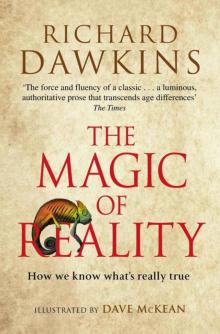 The Magic of Reality
The Magic of Reality The Extended Phenotype
The Extended Phenotype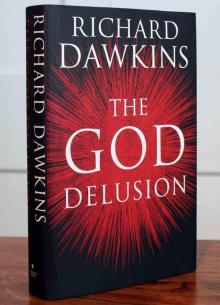 The God Delusion
The God Delusion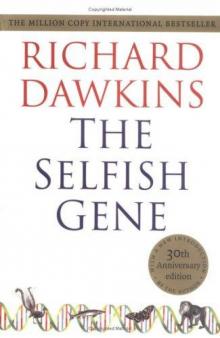 The Selfish Gene
The Selfish Gene The Blind Watchmaker
The Blind Watchmaker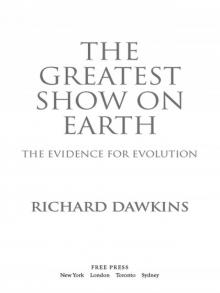 The Greatest Show on Earth
The Greatest Show on Earth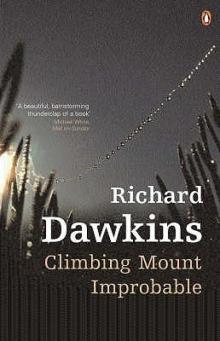 Climbing Mount Improbable
Climbing Mount Improbable Outgrowing God
Outgrowing God Brief Candle in the Dark
Brief Candle in the Dark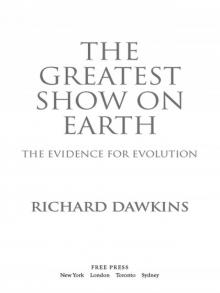 The Greatest Show on Earth: The Evidence for Evolution
The Greatest Show on Earth: The Evidence for Evolution Science in the Soul
Science in the Soul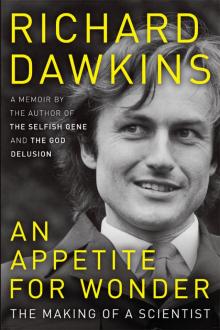 An Appetite for Wonder
An Appetite for Wonder